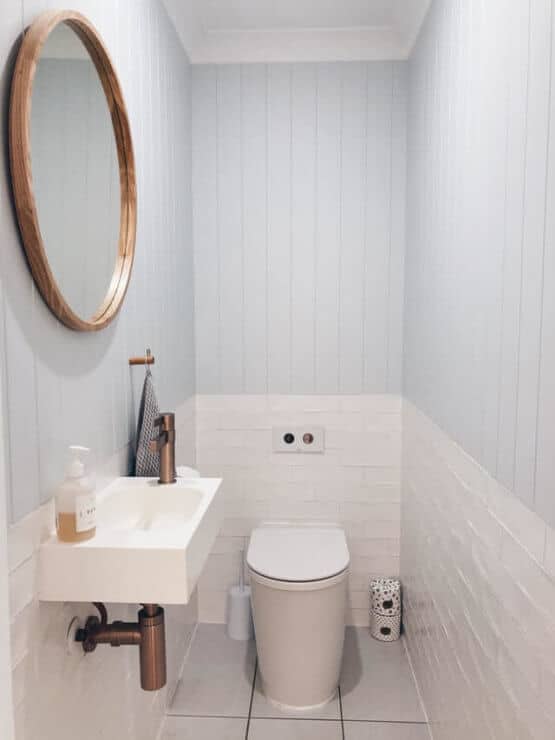When faced with a problem of a toilet overflowing but not clogged – there isn’t virtually any person who wouldn’t panic.
This icky situation includes not only unpleasant smells and sights but also an unavailable toilet for everyday use.
A toilet serves to flush the waste down, and when that mechanism fails, that waste threatens to overflow your bathroom. Uncontrollable toilet water can create a serious flood and destroy the floors and walls.
To learn about why this happens, and also how to stop it and prevent it in the future – keep on reading!
Toilet Overflowing But Not Clogged – Possible Causes

The first wrong assumption one might have when faced with this problem is that there isn’t any clog at all. Just because you’re not seeing the clog itself – or know where the clog is – doesn’t mean that there is no clog.
In most cases, the reason why your toilet is overflowing is because of a backup somewhere in the system. In some other cases, a toilet is overflowing because of some minor issues with the parts of the toilet tank responsible for flushing.
To keep things concise, we categorized all the possibilities that may be a cause of this problem into 3 categories:
- Blocked Drain
- Improper Flow
- Blocked Plumbing Vent
In short, your toilet is likely overflowing because of the blocked drain. This includes flushing certain things that clog the drain or cause a clog further down the drain line.
Also, this includes problems with the septic tank, which can be full or blocked.
Secondly, improper adjustment of water flow may also cause a toilet to overflow. This can be due to poor installation or a worn-out toilet flapper.
Finally, a blocked plumbing vent may also be what is causing your toilet to overflow.
We explain each of these causes in the text that follows.
Toilet Overflowing For No Reason
When a toilet starts overflowing without the cause being as apparent, it may seem as it’s overflowing for no reason. This can be frustrating, but you need to know that the cause still exists.
Let’s have a look at some of the very common things that can result in an overflowing toilet.
Flushing Non-flushable Things
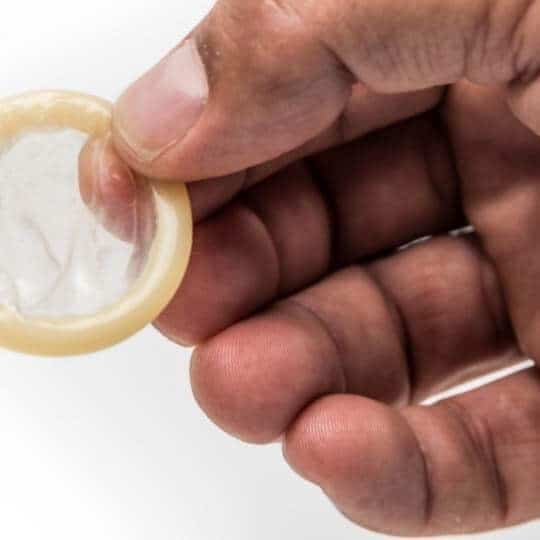
Many people are unaware of some objects being non-flushable. Then they flush certain things down the toilet and are surprised when it ends up clogged.
Make sure to save or write down this list of things you should not ever flush:
- Feminine hygiene products
- Hair
- Baby diapers
- Condoms
- Medicine
- Greasy food
- Tissues
- Paper towels
- Kid toys
When unsure what you may or may not flush, remember that only human waste and dissolvable toilet paper are flushable. Some even recommend not to flush cat litter.
Clogged Drain Pipes
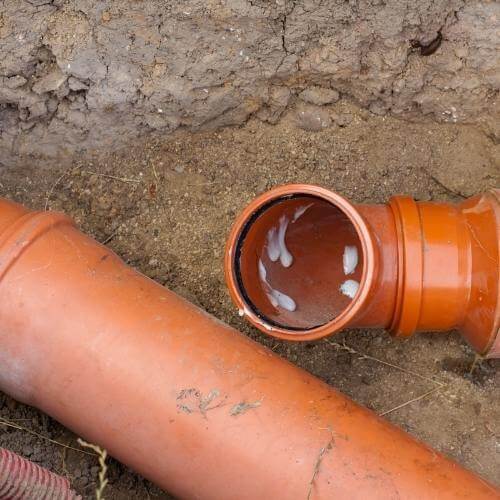
A toilet overflowing but not clogged also points to a possible clog further down the drain line.
Chances are if you flushed something that doesn’t belong in the drain pipes, it didn’t dissolve. What happened is that it most likely got caught up somewhere down the drain line and caused a clog.
If you are certain that you never flushed anything you shouldn’t, then the sewer line got blocked by roots. [1]
The minor clog means that a toilet can sometimes unclog by itself.
However, this problem doesn’t usually resolve itself, as the clog only gets bigger with more waste attaching to it over time.
As a result, the created clog can stop the water from draining, causing your toilet to overflow.
Problem With The Septic Tank
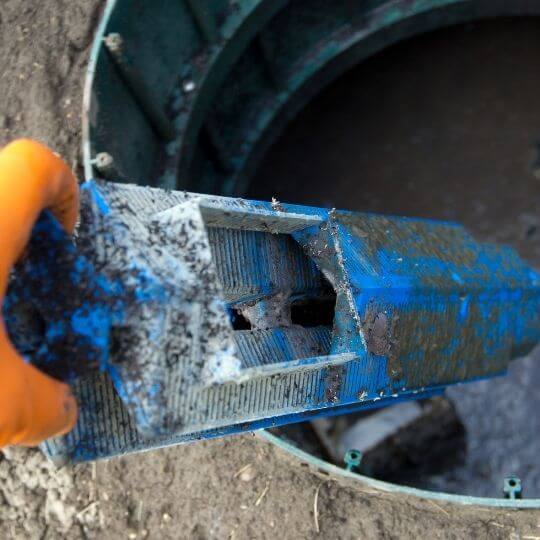
Septic tanks work with a mechanism that breaks down the waste and stores the excess water in the surrounding soil.
This is a very similar problem to the previous one, as it’s also connected to a clog causing a backup in the sewage system.
The septic tank can either be full or blocked. Both of these situations cause a backup in the system and can cause a toilet to overflow.
The reasons for full or improperly working septic tanks are plenty. The most common ones include flushing antibiotics which can kill beneficial bacteria in the tank and disrupt its balance. [2]
Flushing too much grease can also disturb the balance of the septic tank. Finally, flushing undissolvable objects can damage your septic tank.
The unwanted food stuck in your drain lines can invite bugs coming up the drain. This is why you need to make sure to unclog your toilet before it’s too late.
Toilet Overflowing After Flush
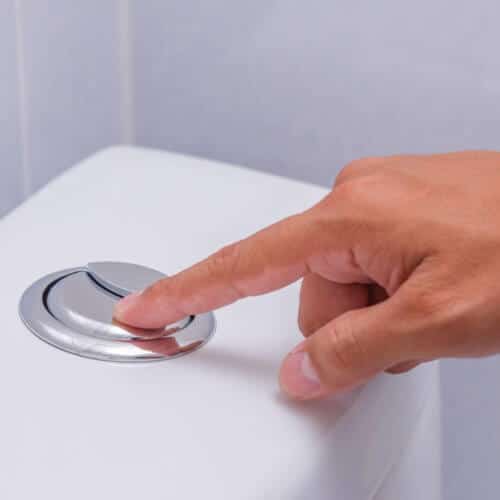
If you’re dealing with a toilet overflowing after a flush, there are some other possible reasons as to why this is happening.
The reasons mentioned previously involve a toilet overflowing from the bowl itself. However, you may find that the toilet overflows after you flush, which is different.
This leads us to the improper flow of the toiler water.
Some low-flow toilets can cause clogging because they use less amount of water. [3]
This is especially the case with some older toilet models.
A proper water flow ensures that waste gets flushed the way it should. In contrast, low water pressure can cause many other problems in the house.
What’s even more common is the flawed toilet fill valve, also known as the ballcock. What a toilet fill valve does is that it controls the water flow in the tank, as it fills and refills.
Since it’s used very frequently, it’s very possible for it to move, which requires readjustment.
When it’s improperly set, it can cause your toilet to overflow, or cause leaks from the tank. Thankfully, it’s easily adjustable and only requires a few simple steps. [4]
Can a Bad Flapper Cause a Toilet to Overflow?
A toilet flapper serves an equally important purpose as the toilet fill valve does.
A fill valve allows the tank to refill and controls the level of water in the tank. On the other hand, a flapper is what initiates the flushing – and also stops it.
In other words, as soon as the flapper goes back to its original place, the tank refills. The flapper is controlled by a person pushing the handle of the toilet.
When you see the signs of the toilet overflowing but not clogged, it’s wrong to assume it’s because of a bad flapper only.
This is because the faulty flapper will cause the constantly running toilet water, which may or may not end up overflowing.
The only way a bad flapper can cause the overflow is if there is a clog further down the drain line. When this clog meets the running water that never stops, you get the definition of an overflowing toilet.
Even if you only face constantly running toilet water, this problem should be resolved as quickly as possible. This is because it can greatly affect your water bills and cause other leaks.
Can a Clogged Vent Cause Toilet to Overflow?
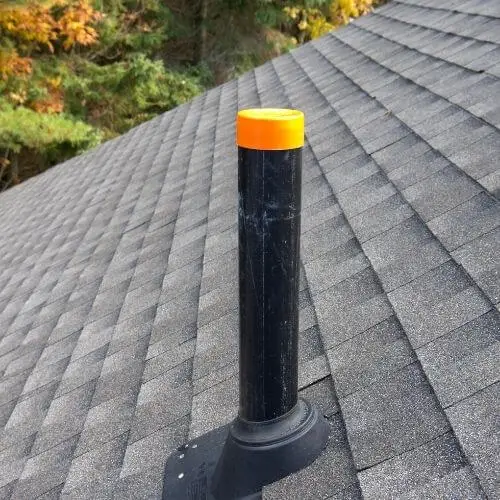
Even though the plumbing vent system doesn’t carry water, it works alongside the draining system. That means that any problems with the plumbing vent can also affect the way your draining system works. Each time you flush, a plumbing vent replaces the lost air by introducing external air into the system. This is why – when a plumbing vent gets clogged – you may notice your toilet clogs more frequently.
Therefore, a clogged plumbing vent may result in the toilet overflowing. Since plumbing vents are on or near the roof, they can easily get clogged with dust, debris, or even bird nests.
You’ll know that you’re dealing with the clogged vent when:
- You hear gurgling sounds
- Notice foul smells from the bathroom
- Water drains very slowly
- Dry P- trap (toilets must have at least some sitting water in them to prevent sewer gases from entering the home) [5]
A clogged plumbing vent can eventually lead to the complete blockage of the water flow which can be very bad.
If you are sure that the reason behind your toilet overflowing is the clogged vent pipe, then your next step is to unclog it.
Most vent pipes can be found in the basement, but some also run near the roof.
Luckily, there is a way to safely clean a plumbing vent without getting on the roof.
Also, before you grab that bleach to unclog the toilet, make sure to read on about what to do when a toilet overflows.
Conclusion
Now that you are aware of the possible causes, next time facing a toilet overflowing but not clogged won’t be confusing.
Even when there isn’t a noticeable clog, that doesn’t mean the clog isn’t present at all. The most common causes of a toilet overflowing do include a clog somewhere in the draining system. If you’re one of the lucky ones then chances are you’re just dealing with a faulty part of the toilet tank. That is easily fixable and usually doesn’t require you to consult a professional.

Michael Davis is a heating & plumbing expert who currently works as independent contractor in SC. He also writes for Plumbertip.
For almost 10 years he worked on various plumbing tasks across South Carolina.



